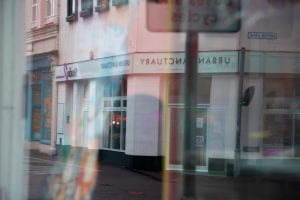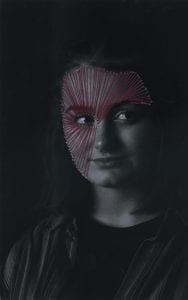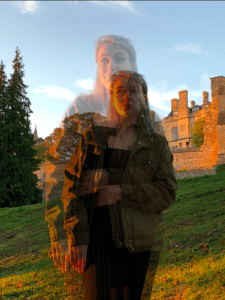Summary of post:
- Features within experimental images
- Research on Dali’s work
- My own experimental images
“Freed from its duty to represent, abstract photography continues to be a catchall genre for the blending of mediums and disciplines. It is an arena to test photography”. (Barbara Kasten, 2012)
When it comes to experimental images or film, the creator will often go against specific codes and conventions that may not fit into a specific genre, or even sub-genre, and can sometimes even go as far as giving the image of a modern or post modern twist. It is simply a form of aesthetic that has the normal technical areas within it, just with a twist. Much like you would when filming, it’s as if you are taking ‘test shots’, seeing what works best and what doesn’t, depending on the artist’s preferences. Some of the mise-en-scene and cinematography that should be focused on includes:
- Creative focusing
- Shoot from your boots
- Gods-Eye View
- Canted
- Ambiguity
- Caustics
- Low-Key in colour
Meanwhile, some of the camera settings that should be considered include:
- Over exposure
- Long exposure
- Bulb (super-long exposure)
- Slow-sync flash
- Multiple exposure
- Go grainy
- Move the Camera
- Panning
- Rotate
- Zoom whilst shooting
- Tilt-shift
- White balance
- Infrared
- Lomography / Toy Cameras
Especially when looking at the types of cinematography that can be used, techniques like this are not often used, giving the image that may use such techniques originality, and more for the spectator to look at. Artist Salvador Dali, despite being well known for his surreal paintings, also had created the “Lobster Telephone”, a prime example of experimental imagry and surrealism, in which the Tate Modern website agreed.
“This is a classic example of a surrealist object, made from the conjunction of items not normally associated with each other, resulting in something both playful and menacing.”
The article also expresses how Dali found “strong sexual connotations” for lobsters and telephones, with phones even appearing in some of his paintings, such as “Mountain Lake”. Furthermore, for the 1939 New York World’s Fair, Dalí created a multi-media experience, which he named “The Dream of Venus”. This consisted of the nude aesthetic, having nude models in ‘costumes’ made of seafood, which was then photographed by Horst P. Horst and George Platt Lynes. Within this, he used a lobster to cover up the woman, which is the correlated to the fact that the lobster’s tail within “Lobster Telephone” is over the mouth piece of the phone.
Below I have some of my own images that I decided to pick that I consider to be that of experimental.

Surprisingly, I was able to create this photo raw, and did not need Photoshop to create the “double exposure” effect. Instead, I used the reflection of a window and managed to catch the reflection in a way that could almost be seen as “aesthetically pleasing”, as well as almost fitting within the architectural genre. Fitting in within creative focus, as well as slightly adjusting the hue within Photoshop, I feel that this photo’s outcome was very successful, and clearly represents how easy and simple experimental photography can be. Furthermore, it almost creates a surreal effect to the image, giving it both originality and something to look at every time you come back to the image, especially when it comes to colours.

Inspired by Maurizio Anzeri, for a previous project, I decided to take on the art genre, experimenting with texture and materials, as well as black and white imagery. I decided to take photos in a studio, make them black and white in Photoshop, and then sewed lines, shapes and patters within them. Whist the base image is still raw (excluding the black and white editing), I wanted to further show how you can turn a simple image into something more unique, and whilst it requires patience I found that the use of texture, due to the thread being physically sewed in, and the pop of colour created an interesting concept. Moreover, I feel that the way in which the thread highlights her face, helps display her facial features more, centring the image in a way. Finally, with the colour of the thread being red, and her facial expression being blank, it can come off as a connotation of anger, love, or lust, due to the specific connotations the colour red may have, with almost no other mise-en-scene highlighting her character.

Finally, I wanted to compare how you can create double exposure in Photoshop, to much more raw images, almost comparing how technology has grown over time. Extremely loosely inspired by “The Ghosts That Carried us Away (Martin Dietrich, 2014), I decided to layer and slightly adjust the levels within the images of my friend, taking it at a low angle, and slightly canted. Though I find this to be the least appealing of the three, I think it is useful to show all different kinds of techniques, to display that experimental images, no matter how unusual they may seem, always have interesting concepts to them, no matter the method you use.
Dietrich, M. (2014), Behance, https://www.behance.net/gallery/14029499/The-ghosts-that-carried-us-away [accessed on November 16th 2018]
Tate Modern, (2018), Salvador Dali, Lobster Telephone, 1936, Tate, https://www.tate.org.uk/art/artworks/dali-lobster-telephone-t03257 [accessed on 16th November 2018]




Leave a Reply